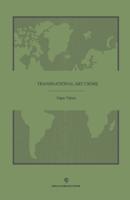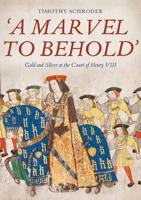Publisher's Synopsis
本文以明代景德鎮生產青花瓷器上的嬰戲圖和仕女圖人物紋飾為研究對象, 並把人物紋飾分成八個主題類別, 衡量嬰戲圖、仕女圖這兩種主題紋飾在整個明代人物紋飾故事類別中的所占比重。發現仕女圖、嬰戲圖最常見, 雲紋、晴竹紋 是與人物紋飾常伴的輔助紋飾, 梳理各自發展的不同脈絡。並在闡述嬰戲圖、仕女圖主題紋飾結合的過程中, 指出仕女嬰戲圖中女子與孩童在畫面上的有距離逐漸拉近的趨勢。可以看出, 這些是人們意願的一種達成。留白技術的應用更符合藝術心理的視覺享受。明中期是兩種主題紋飾的發展的高峰時期, 官窯瓷畫生產的波折卻給民窯瓷畫的發展帶來了機遇。嬰戲內容的增加, "仕女"也開始走出庭園, 一些常見的圖案已經模式化, 得到延續。中期部分繼承了早期的畫院之風, 孩童戲的更有文化, 仕女美得有詩意, 兩者結合其實已成定局。尚不能確認明中期成化仕女瓷畫多寡與萬貴妃有著直接關係。明晚期, 民窯產能的提升。瓷畫繼續受到其他戲劇、傳奇等藝術形式影響, 人物紋飾故事類別豐富, 戲童與仕女紛紛走進人物故事類別中去, 又詩又畫, 蘊意十足, 好不熱鬧。如此一來, 抱琵琶的女子並非都可以解釋為昭君出塞, 另有劇情。元代後期景德鎮熱衷於繪製帶有人物故事青花瓷器, 而明早期瓷畫卻不見這些故事的痕跡。洪武一朝人物紋飾幾乎銷聲匿跡, 最主要的原因並非是青料與技術的限制, 而是關於人物紋飾繪畫的"洪武禁制"。永樂宣德時期總體上堅持"禁制"的同時, 也開啟了明早期畫院人物瓷畫的風格。"禁制"仍嚴, 器物量少, 但多是精品。諸如戲童"傳臚"、鬥草、戲蝶遊戲等生活化場景圖案, 仕女"惜花"、"愛月"、"掬水"、"弄花"、焚香拜月等圖案常被明中晚期民窯仿製。至於宣德時期瓷畫"女多男少"的論述, 只能作為現狀描述, 並不能作為宣德時期人物紋飾推斷結論。明代青花瓷器仕女圖與嬰戲圖, 丫頭俏, 小姐嬌, 戲童萌, 書童憨。人物瓷畫數不勝數, 筆者所及畢竟有限, 僅闡釋了明代青花人物瓷畫的一個方面, 並非歷史全貌。由衷希望, 自身學識的提高, 材料更為充足, 借應用統計學、藝術心 理學等方法作進一步研究。 This paper mainly figures on the character pattern of blue and white porcelain by Jingdezhen kiln in Ming Dynasty. It is necessary to take children-playing pattern and Ladies picture respectively development process as the main line through the unified classification of character pattern. In addition, it is worth analyzing of the meaning of their general features and different themes decoration in Ming Dynasty of each stage of development. Based on these evidences, it will take measure of the proportion of the two themes throughout the Ming Dynasty characters in the story category, and make Interpretation on children-playing pattern and Ladies picture of blue and white porcelain in which they reflect the cultural connotation and artistic effect in Ming Dynasty. There are five parts. The introduction part briefly introduce the reason of this topic, the research scope, and the research content of this thesis. The first chapter introduce the discoveries of character story decoration of blue and white porcelain by Jingdezhen kiln in Ming Dynasty and make a review on previous studies. The second chapter and the third chapter analyze the meaning of their general features and different themes decoration in Ming Dynasty of each stage of development. As for description of the status, it must be taken measure of the proportion of the two themes throughout the Ming Dynasty characters in the story category. Identify with the theme decoration often ac







